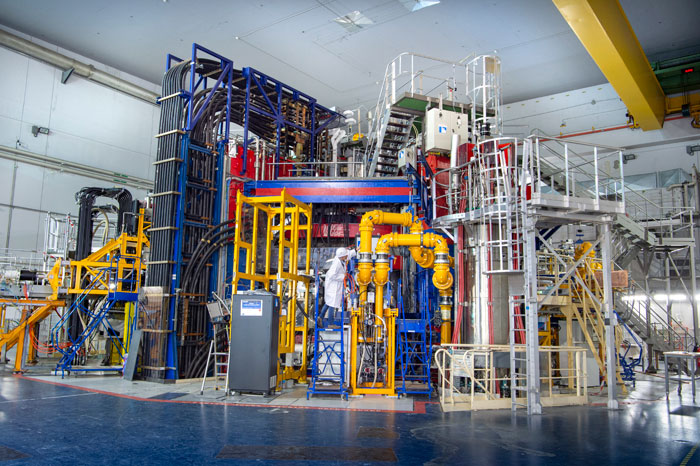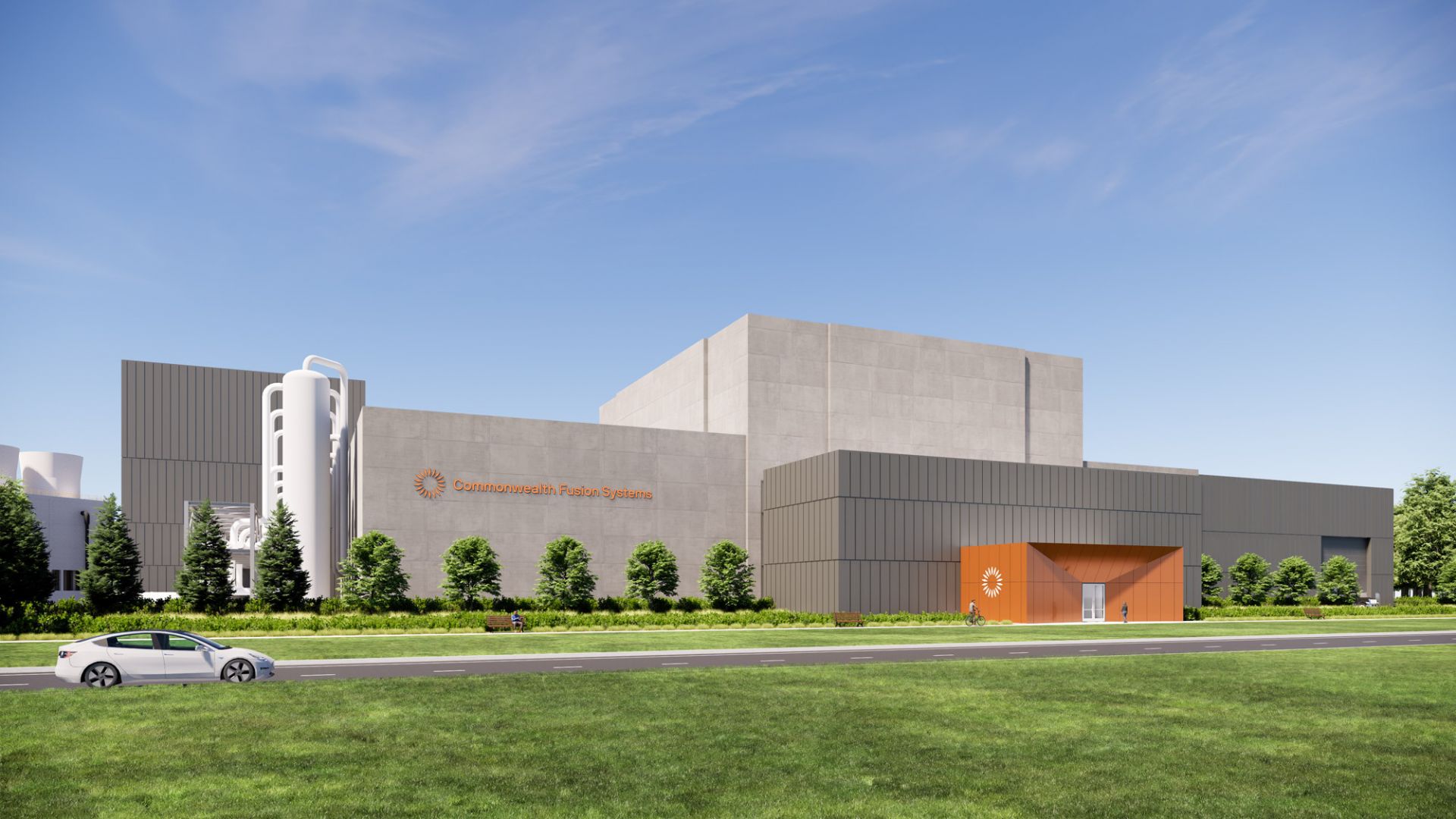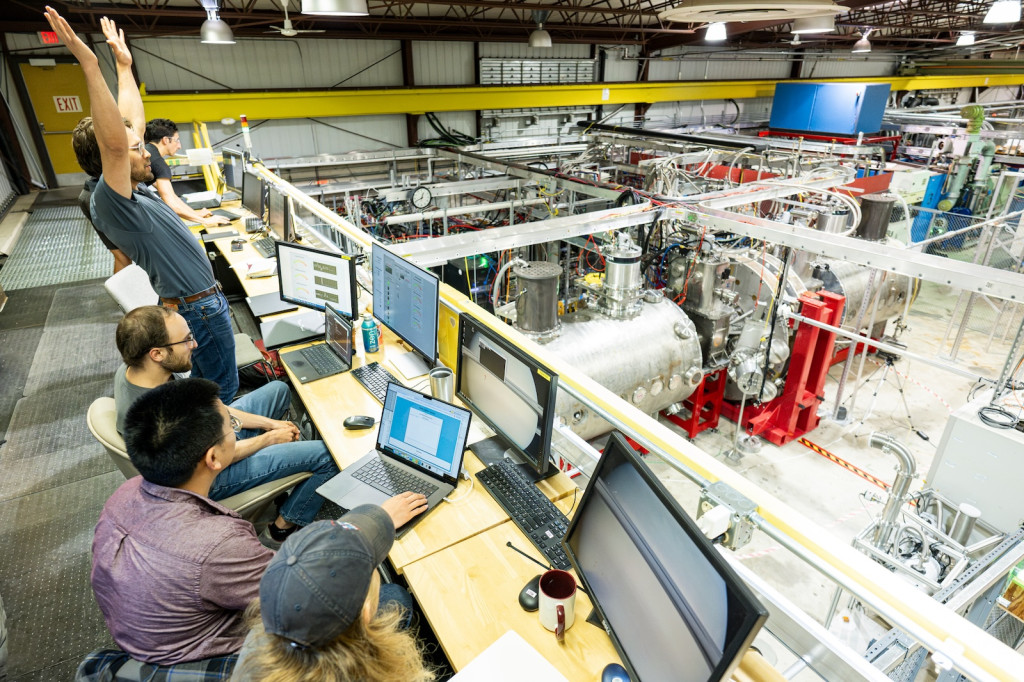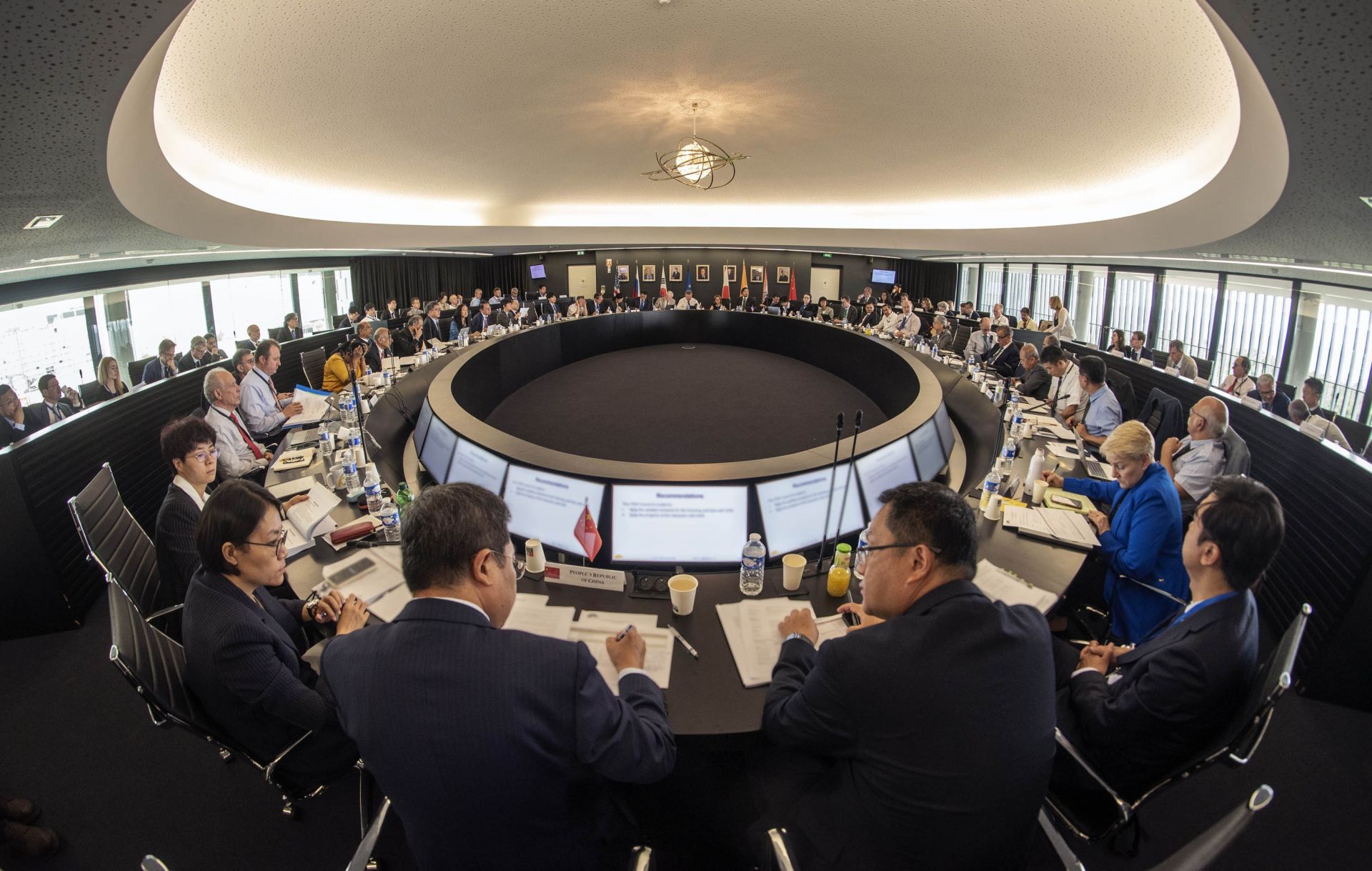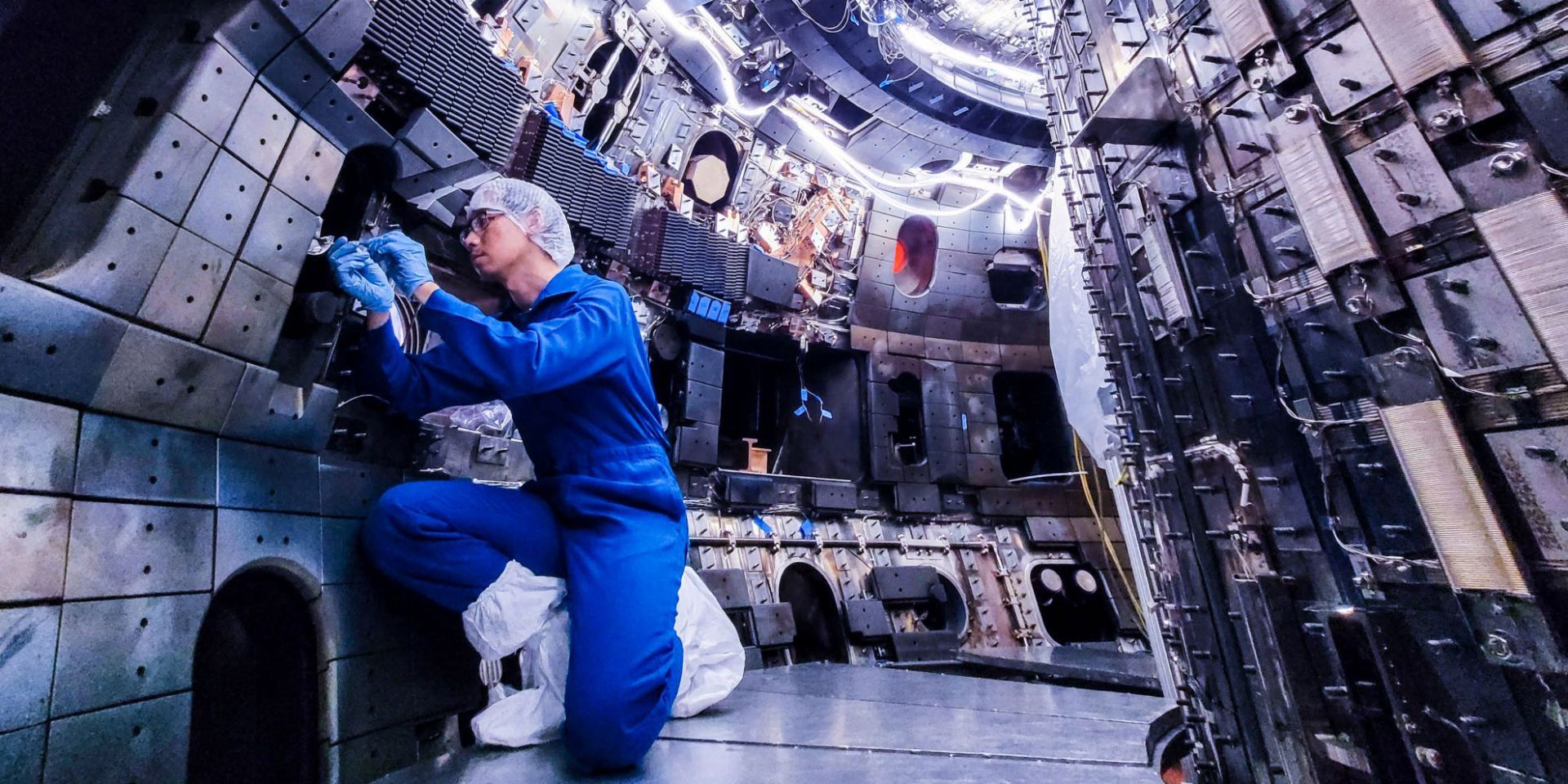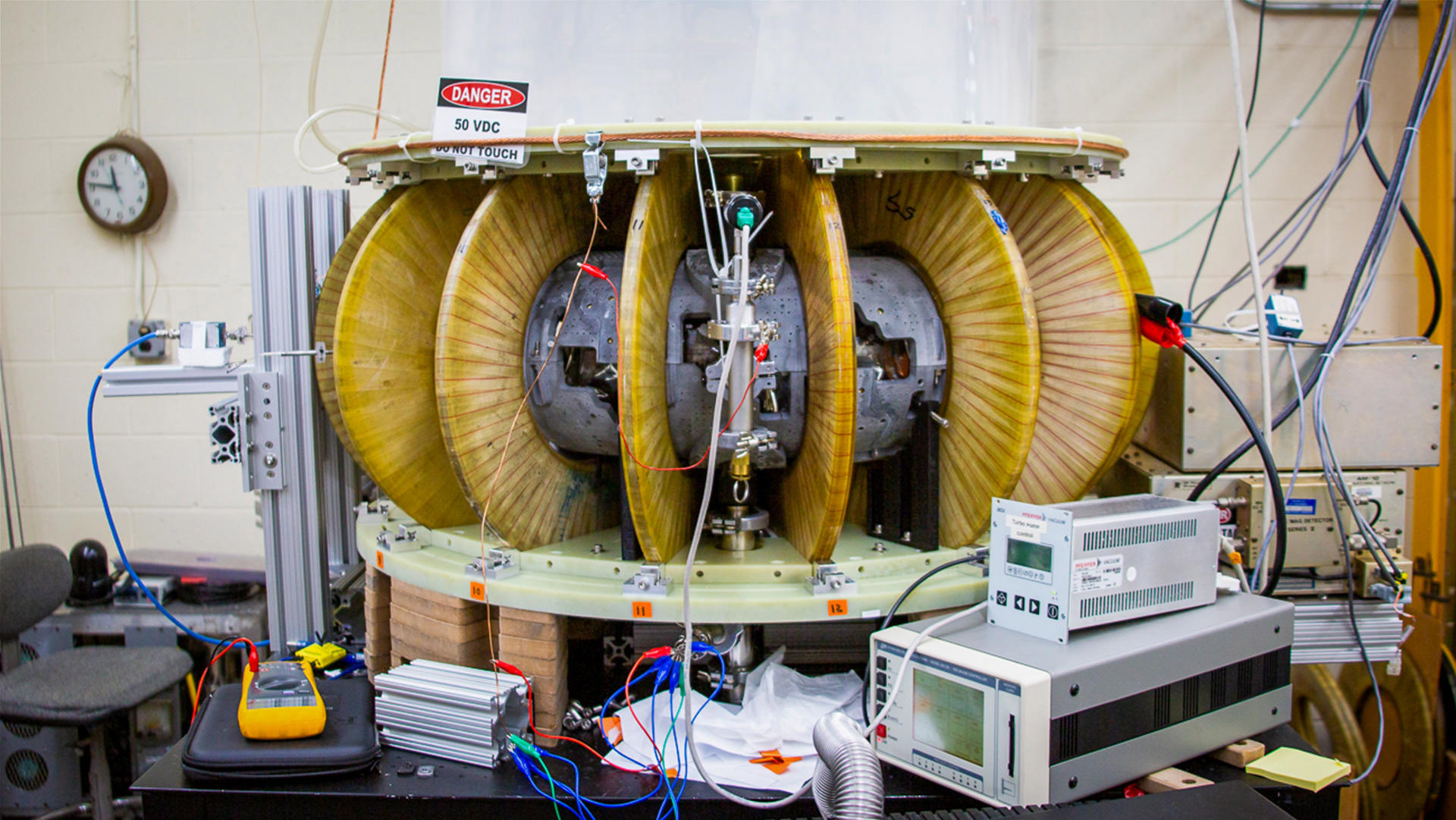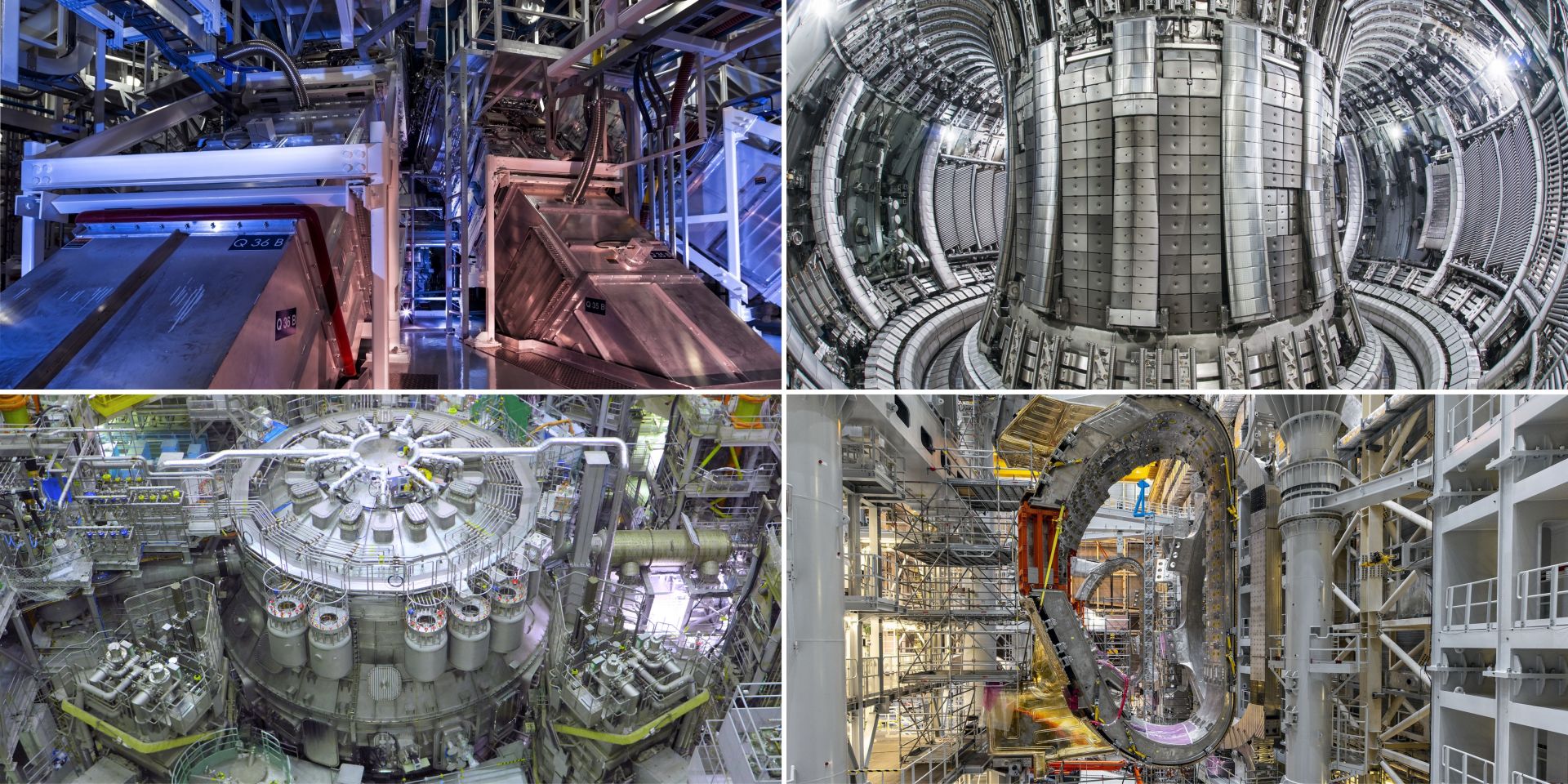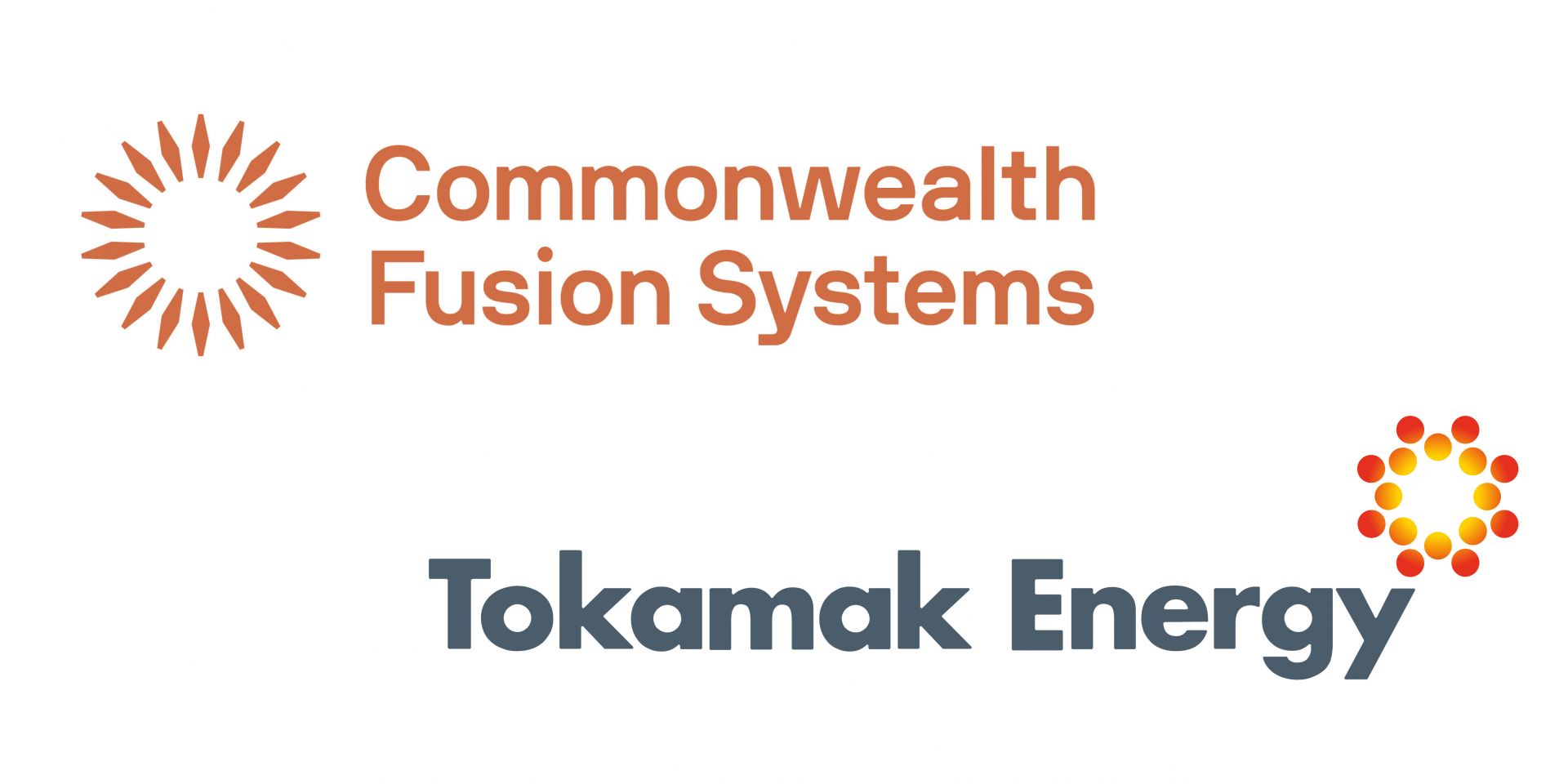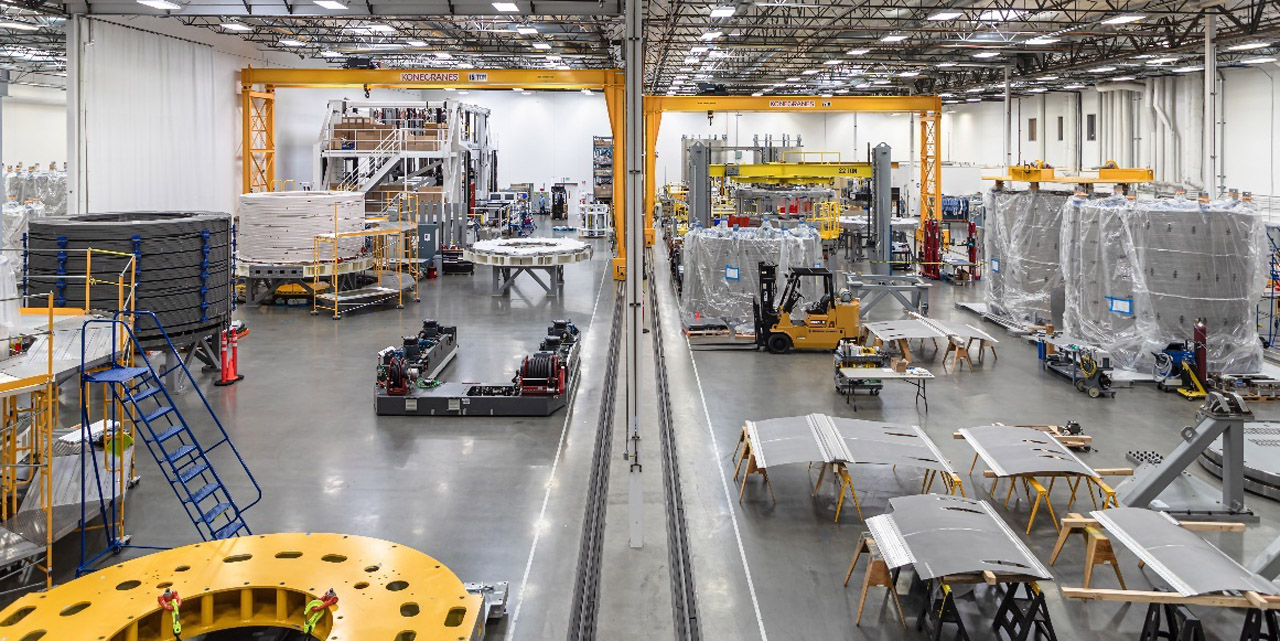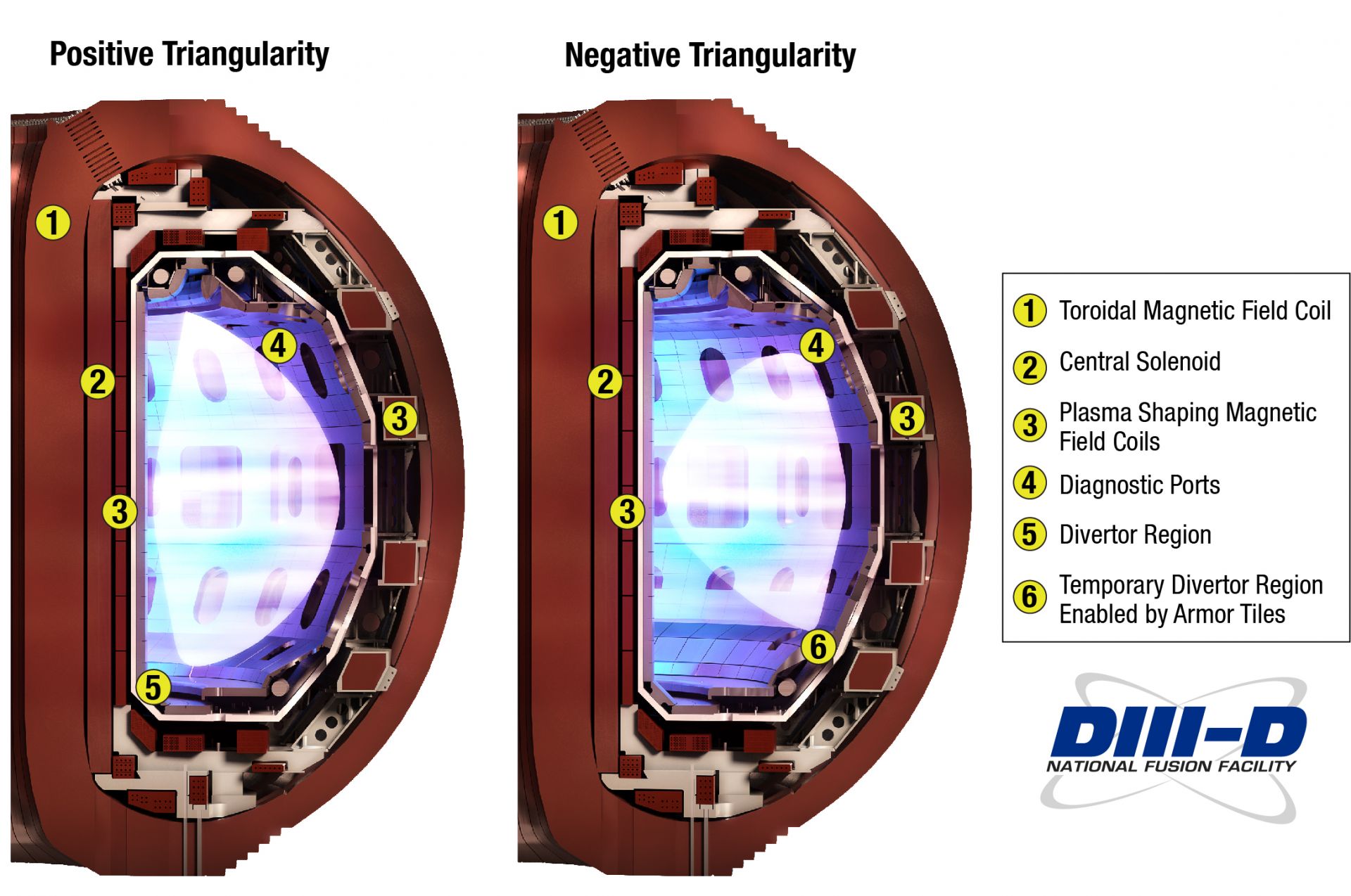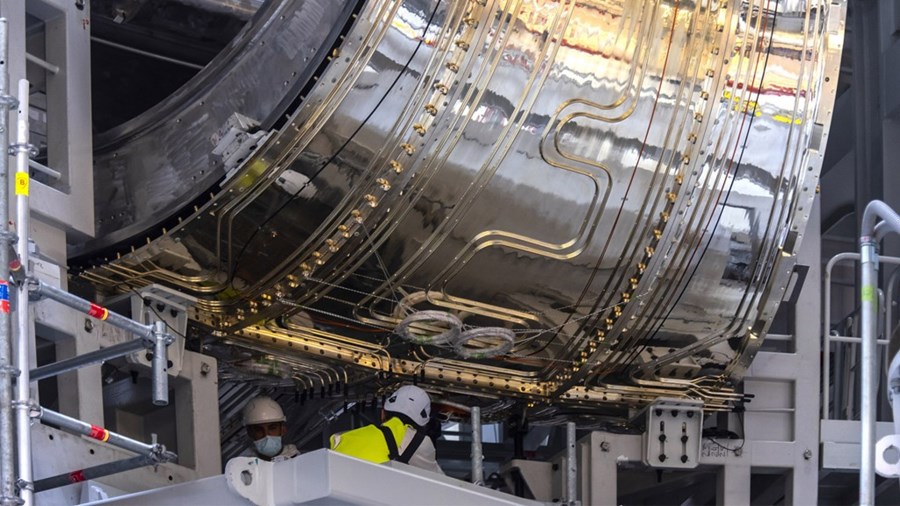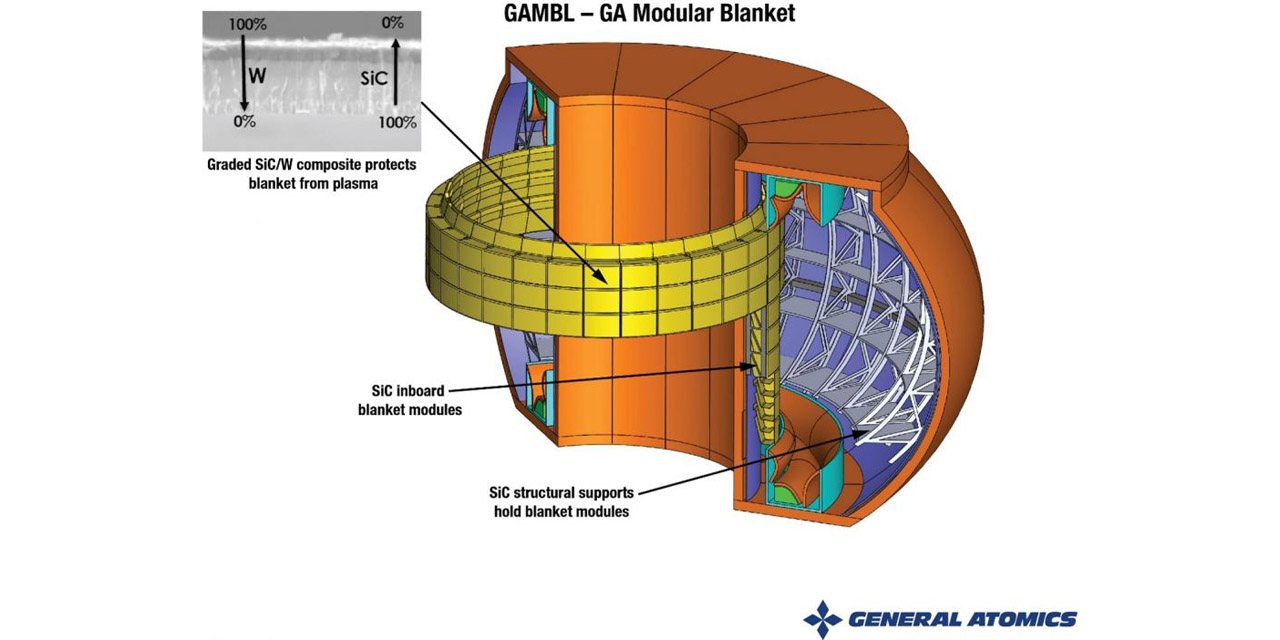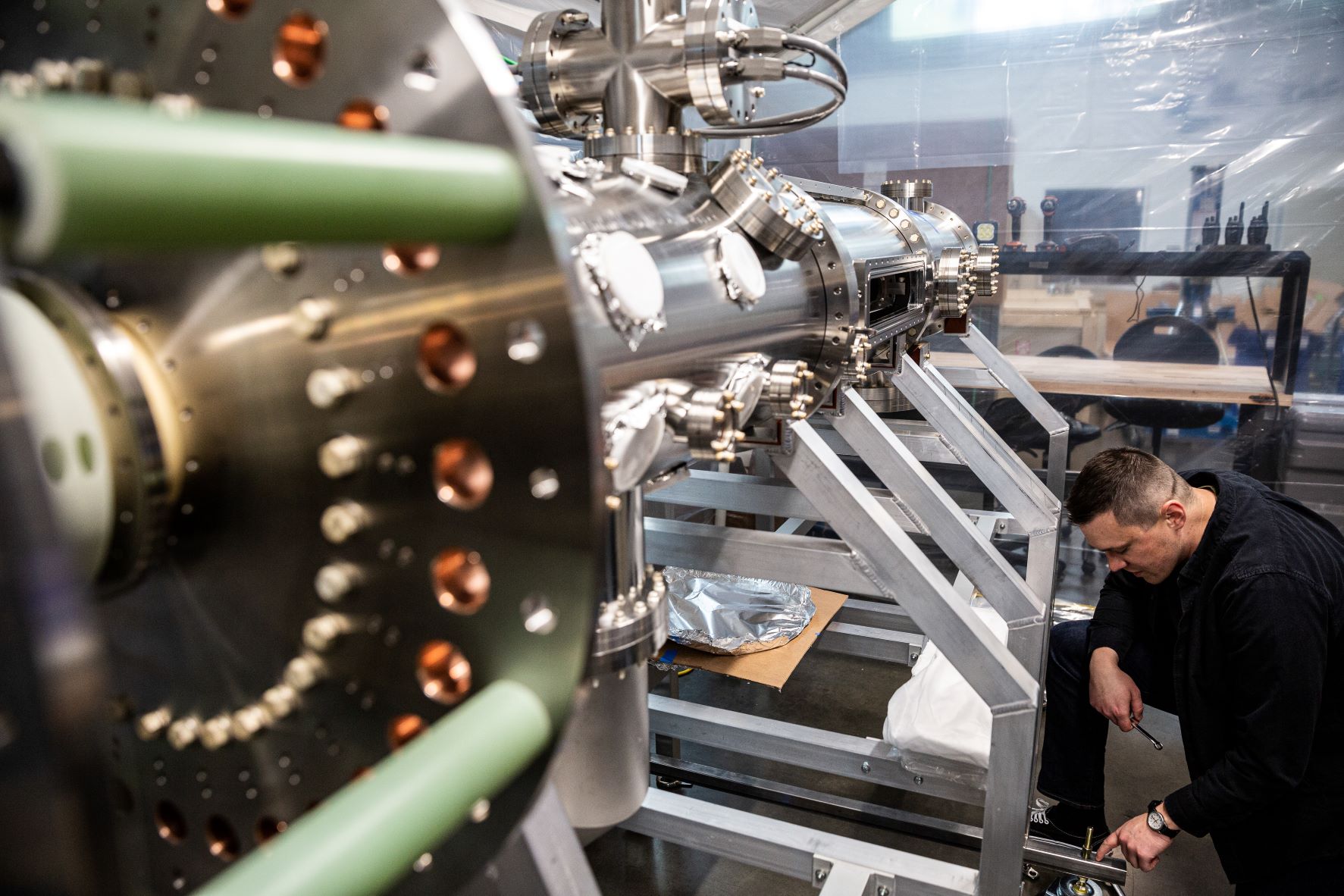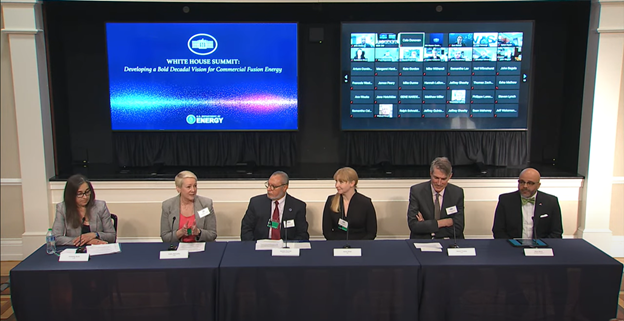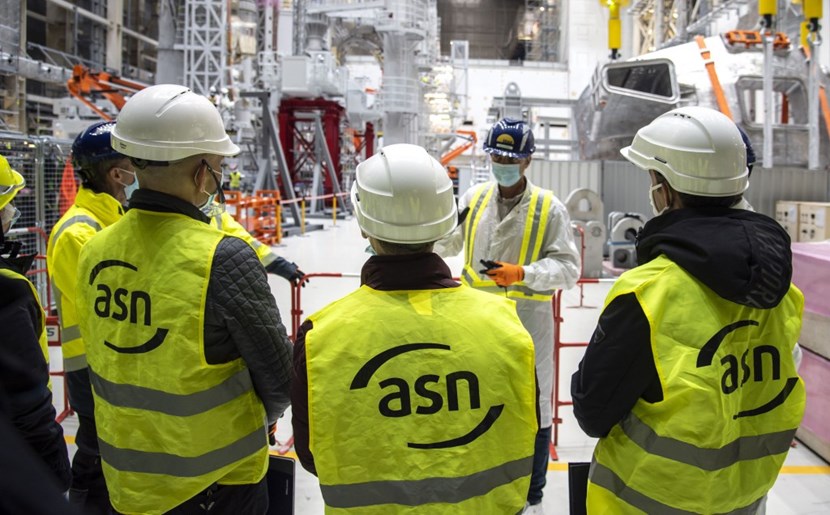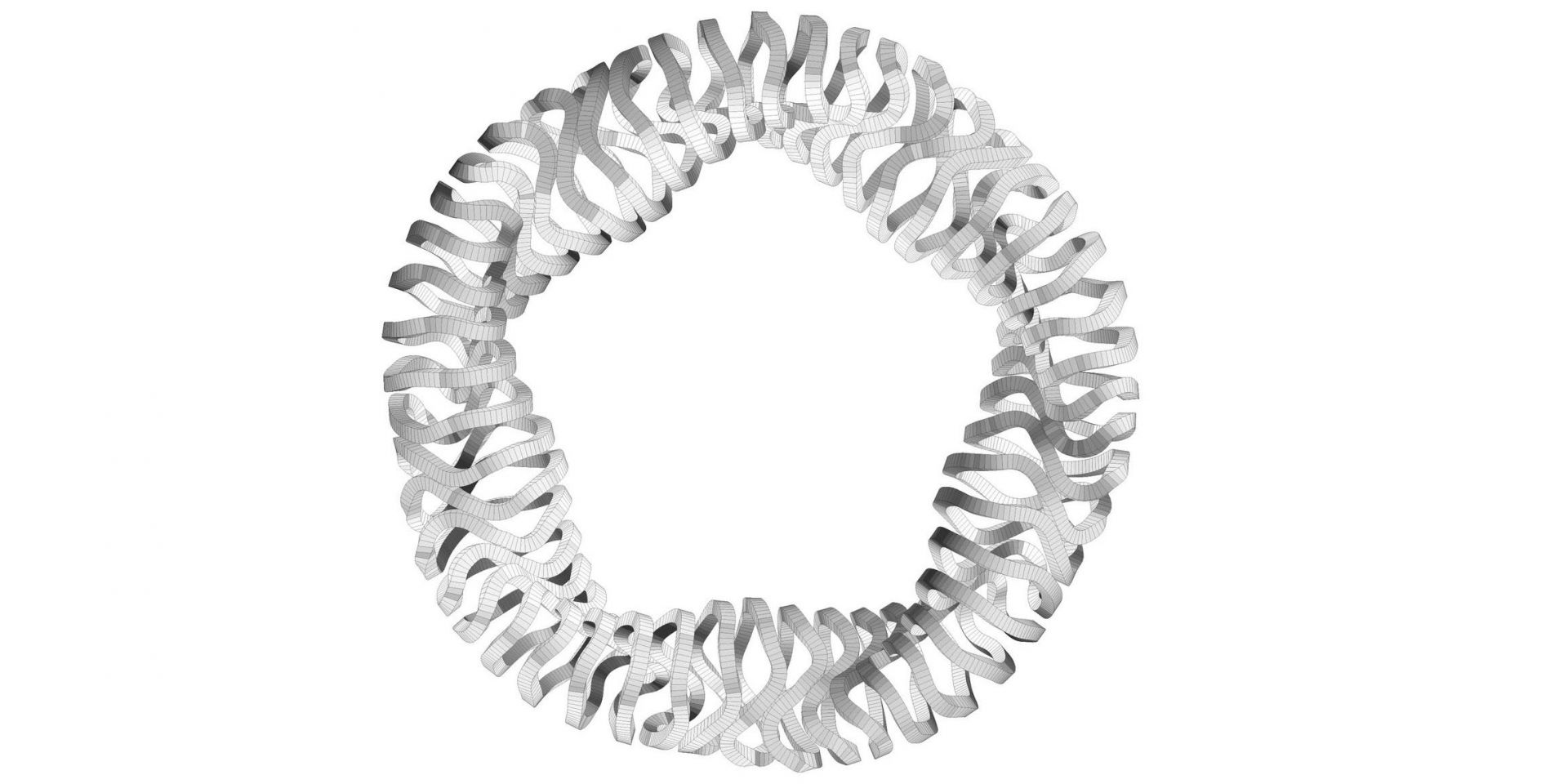The WEST tokamak. (Photo: L. Godart/CEA)
The French magnetic confinement fusion tokamak known as WEST maintained a plasma in February for more than 22 minutes—1,337 seconds, to be precise—and “smashed” the previous record plasma duration for a tokamak with a 25 percent improvement, according to the CEA, which operates the machine. The previous 1,006-second record was set by China’s EAST just a few weeks prior. Records are made to be broken, but this rapid progress illustrates a collective, global increase in plasma confinement expertise, aided by tungsten in key components.
A message from WMG, Inc.
WMG FLTRSTOR™ System Overview
Learn More
A rendering of Commonwealth Fusion Systems planned ARC power plant. (Image: CFS)
Commonwealth Fusion Systems (CFS) has announced that it plans to build a fusion power plant, named ARC, at the James River Industrial Park in Chesterfield County, Va.—and that it expects to be the first company to make fusion power available at grid scale.
Elliot Claveau, honorary fellow in the UW–Madison Department of Physics and experimental scientist at Realta Fusion, raises his arms in celebration of achieving a plasma in WHAM at the Wisconsin Plasma Physics Laboratory. The device is seen on the floor of the lab. (Photo: Bryce Richter/UW–Madison)
The magnetic mirror fusion concept dates to the early 1950s, but decades ago it was sidelined by technical difficulties and researchers turned to tokamak fusion in their quest for confinement. Now it’s getting another look—with significantly more powerful technology—through WHAM, the Wisconsin HTS Axisymmetric Mirror, an experiment in partnership between startup Realta Fusion and the University of Wisconsin–Madison.
Member delegates, their experts and interpreters, and representatives of the ITER Organization and the ITER domestic agencies convened for the 34th ITER Council. (Photo: ITER)
At the 34th ITER Council Meeting, held June 19–20, ITER director general Pietro Barabaschi reported on ITER’s progress and presented an updated baseline proposal that would “prioritize the start of substantial research operations as rapidly as possible.”
An engineer adjusts mirrors while installing new diagnostic equipment inside the DIII-D tokamak. (Photo: General Atomics)
The DIII-D National Fusion Facility is starting up after an eight-month experimental hiatus, equipped with new and improved plasma control and diagnostic systems. The upgrades will help researchers from around the nation and the world resolve key physics questions to bridge the gap between current magnetic confinement fusion research and the first fusion power pilot plants. General Atomics, which operates DIII-D for the Department of Energy, announced the completion of upgrades on May 8.
MUSE, the first stellarator to use permanent magnets. (Photo: Michael Livingston/PPPL Communications)
Researchers at the Department of Energy’s Princeton Plasma Physics Laboratory are using a stellarator they designed and built using permanent rare-earth magnets and a 3D-printed shell to help test new fusion power concepts. MUSE—the first stellarator built at PPPL in 50 years—took one year to construct and generated its first plasma in February 2023. The work that went into its design has already inspired a stellarator power plant concept being developed by a commercial spin-off, Thea Energy.
One year ago today, researchers at Lawrence Livermore National Laboratory achieved a record shot at the National Ignition Facility (NIF) that set the world talking about the potential of fusion energy. And the buzz hasn’t stopped. Fusion energy is getting its most significant attention yet on the world stage at COP28 in Dubai, UAE, where John Kerry, U.S. special presidential envoy for climate, delivered a keynote address today titled “An inclusive fusion energy future,” followed by a panel discussion.
Commonwealth Fusion Systems (CFS) and Tokamak Energy Inc. are the two magnetic confinement tokamak fusion developers to receive a portion of the $46 million in funding announced by the Department of Energy in late May for the first 18 months of a public-private Milestone-Based Fusion Development Program aimed at developing fusion pilot plant designs and resolving related scientific and technological challenges within five to 10 years.
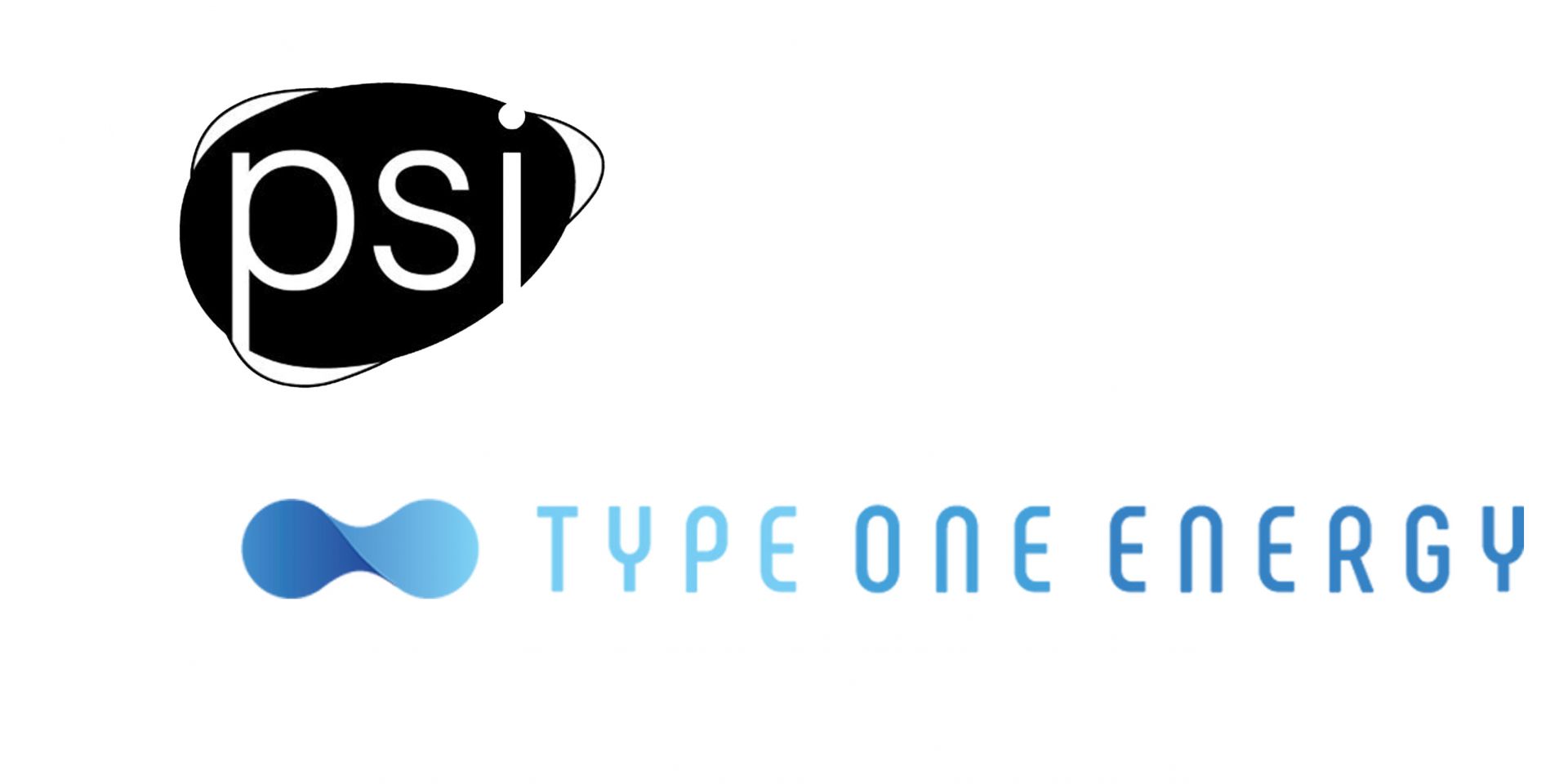
Princeton Stellarators Inc. (PSI) and Type One Energy Group are two of the eight fusion developers selected by the Department of Energy in late May to receive a total of $46 million in funding to kick off a public-private Milestone-Based Fusion Development Program aimed at developing fusion pilot plant designs and resolving related scientific and technological challenges within five to 10 years. The DOE’s selections cover an array of plasma confinement concepts, including the magnetic confinement stellarators being developed by PSI and Type One more than 70 years after the stellarator was first envisioned.
Nuclear Newswire previously took a close look at two of the DOE’s picks: Realta Fusion and Zap Energy (“innovative concept”) and Focused Energy and Xcimer Energy (inertial fusion). Here, we’ll examine how PSI and Type One are engineering solutions to the fusion plasma confinement challenge. Both companies are benefiting from recent advances in computing power and high-temperature superconducting (HTS) magnets. It’s in plans for design, manufacturing, assembly, and control of their stellarators that they differ.
GA’s Magnet Technologies Center. (Photo: GA)
General Atomics (GA) and Tokamak Energy Ltd. are each independently developing magnetic confinement fusion power plant concepts that would use a tokamak and high-temperature superconducting (HTS) magnets to confine and shape a plasma heated to over 100 million degrees Celsius. On May 30, they announced a memorandum of understanding to collaborate on HTS magnet technology for fusion energy and other applications.
A side-by-side comparison of a standard plasma configuration (at left) and the plasma created during the negative triangularity campaign at DIII-D, which was made possible by the installation of a temporary divertor region. (Image: General Atomics)
The DIII-D National Fusion Facility in San Diego, Calif., has completed a monthlong research campaign using a negative triangularity plasma configuration inside its fusion tokamak and produced initial data that “appear very encouraging,” according to an April 24 news release from General Atomics (GA), which operates the Office of Science user facility on behalf of the Department of Energy. Full experimental results on “the highest-powered negative triangularity experiments in the history of the U.S. fusion research program” are expected this summer, according to GA.
CFS CEO Bob Mumgaard showing Sen. Warren (left) and Secretary Granholm (center) around the SPARC facility. (Photo: CFS)
Commonwealth Fusion Systems (CFS) hosted visiting officials for a tour and ribbon-cutting ceremony to officially open its new headquarters in Devens, Mass., on February 10. Energy secretary Jennifer Granholm, Sen. Elizabeth Warren (D., Mass.), and Sen. Edward Markey (D., Mass.) were among the national, state, and local leaders invited to celebrate what CFS heralded as a “fusion energy campus.”
The cooling pipes that snake along the surface of the vacuum vessel thermal shield will be removed and replaced. Here, on a right-hand outboard panel, workers determine the impact of pipe removal on the surface of the component. (Photo: ITER Organization)
ITER’s machine assembly phase began about two and a half years ago. Now, staff are reversing some of that assembly work to make needed repairs. According to a news article published by the ITER Organization on January 9, ITER is “facing challenges common to every industrial venture involving first-of-a-kind components.” Over one year after problems were first detected and less than two months after they were made public in late November, tests and analysis are producing a clearer picture of necessary repairs to the tokamak’s thermal shield panels and vacuum vessel sectors.
“There is no scandal here,” said ITER director general Pietro Barabaschi. “Such things happen. I've seen many issues of the kind, and much worse.”
The target chamber of LLNL’s NIF, where 192 laser beams delivered more than 2 million joules of ultraviolet energy to a tiny fuel pellet to create fusion ignition on December 5, 2022.
It’s official: Early in the morning on December 5 at Lawrence Livermore National Laboratory’s National Ignition Facility (NIF), the laser-triggered implosion of a meticulously engineered capsule of deuterium and tritium about the size of a peppercorn yielded, for the first time on Earth, more energy from a fusion reaction than was delivered to the capsule. The input of 2.05 megajoules (MJ) to the target heated the diamond-shelled, spherical capsule to over 3 million degrees Celsius and yielded 3.15 MJ of fusion energy output. The achievement was announced earlier today by officials and scientists representing the Department of Energy and its National Nuclear Security Administration, the White House, and LLNL during a livestreamed event.
A total of about 23 kilometers (about 14 miles) of piping are welded to the surface of the thermal shield panels. The piping on a vacuum vessel thermal shield panel is clearly visible in this photo. (Photo: ITER Organization)
The ITER Organization is working on a new baseline schedule for the magnetic confinement fusion experiment launched in 1985 and now under construction in southern France. First plasma was scheduled for December 2025 and deuterium-tritium operations for 2035 under a schedule approved in November 2016 that will soon be shelved. In addition to impacts from COVID-19 delays and uncertainty resulting from Russia’s war in Ukraine, ITER leaders must now factor in repair time for “component challenges.”
This fusion tokamak cutaway illustrates how the GAMBL concept would be incorporated into a fusion pilot plant. The SiC-tungsten composite wall provides superior heat-removal capabilities and durability, and a modular approach enables fabrication using existing technologies. (Image: GA)
Researchers at General Atomics (GA) are proposing a breeding blanket made of modular silicon carbide–based components to withstand the intense conditions in a high-power fusion power plant. The GA modular blanket (GAMBL) concept is described in an article published this month in the journal Fusion Engineering and Design, and was introduced by GA in a July 13 press release.
The first plasmas created in FuZE-Q, shown here during assembly, represent a key step towards fusion experiments with net energy output. (Photo: Zap Energy)
Zap Energy has created the first plasmas in its FuZE-Q machine—the company’s fourth prototype machine and the one it hopes will demonstrate a net energy gain from a Z-pinch fusion plasma just one millimeter in diameter and half a meter long. Zap Energy announced that engineering achievement and the close of $160 million in Series C funding in late June.
A panel on the status and benefits of fusion technology featured, from left, Kimberly Budil (moderator), of Lawrence Livermore National Laboratory; Kathy McCarthy, of Oak Ridge National Laboratory; Abdalla Darwish, of Dillard University; Anne White, of the Massachusetts Institute of Technology; Steven Cowley, of Princeton Plasma Physics Laboratory; and Mark Berry, of Southern Company.
The White House Office of Science and Technology Policy and the Department of Energy cohosted the White House Summit on Developing a Bold Decadal Vision for Commercial Fusion Energy on March 17. The livestreamed event brought together fusion leaders from government, industry, academia, and other stakeholder groups to showcase recent achievements in fusion research and discuss the administration’s strategy to support the development of commercial fusion energy. Energy Secretary Jennifer Granholm’s announcement of a new agency-wide fusion energy initiative and a funding opportunity worth $50 million for magnetic confinement fusion research made March 17 a lucky day indeed for the U.S. fusion energy community.
Approval from French regulator ASN is required before ITER vacuum vessel welding can begin. (Photo: ITER)
In a February 28 article posted on the ITER Organization website, Gilles Perrier, head of ITER’s Safety and Quality Department, addressed the decision by French nuclear safety regulator ASN (Autorité de sûreté nucléaire) to delay the anticipated February 1 release of a preset tokamak assembly “hold point.”
The magnet system of Wendelstein 7-X features 50 superconducting magnet coils. (Graphic: IPP)
The Max Planck Institute for Plasma Physics (IPP) was founded in Garching, Germany, in 1960, the same year that its Wendelstein 1a stellarator began operation. Wendelstein 7-X is now operating at IPP’s site in Greifswald, Germany, and one of the objectives the device was designed to achieve has recently been confirmed, IPP announced on August 12. Analysis by IPP scientists shows that the twisted magnetic coils of the device successfully control plasma energy losses, indicating that stellarator fusion devices could be suitable for power plants, according to a detailed analysis of experimental results published on August 11 in Nature.
